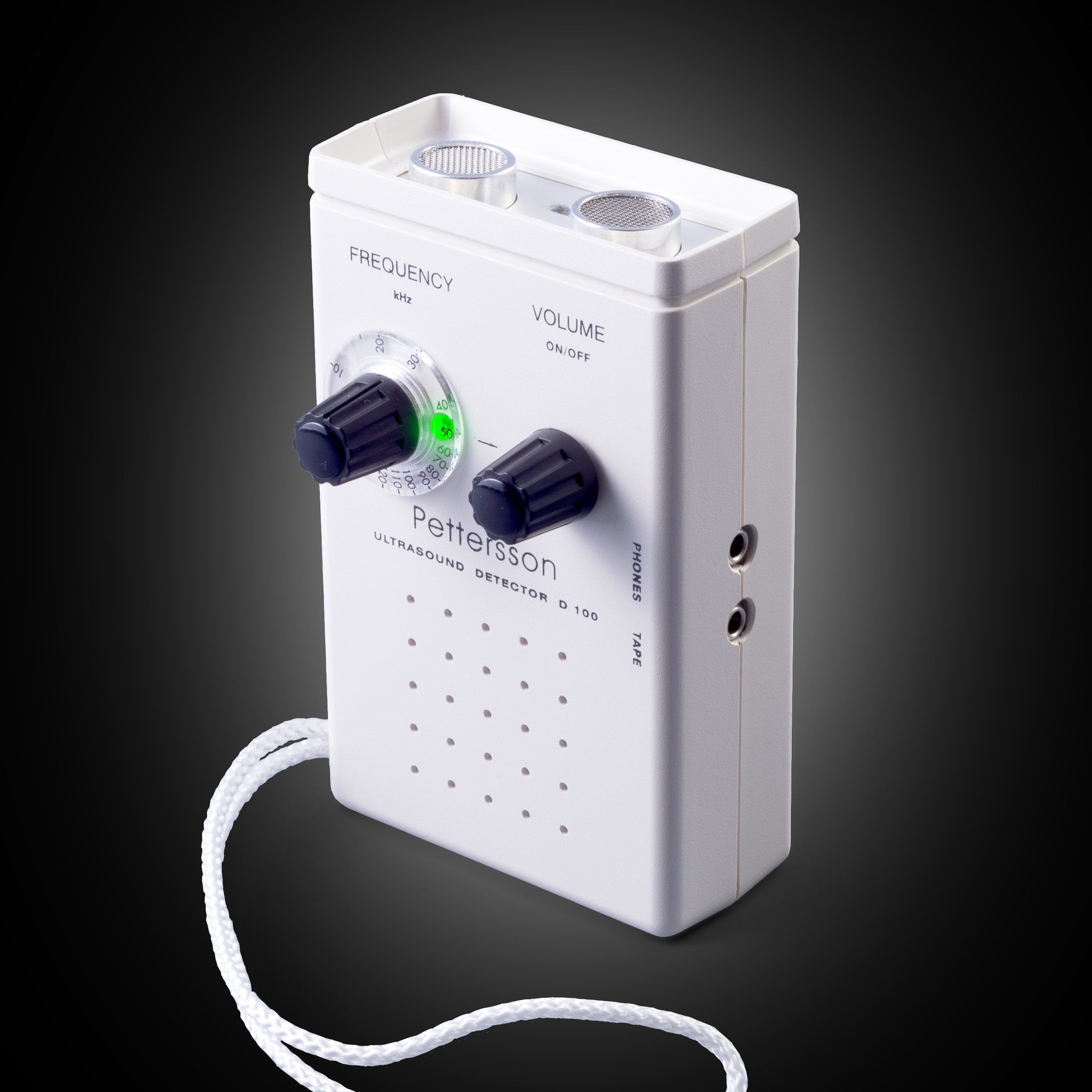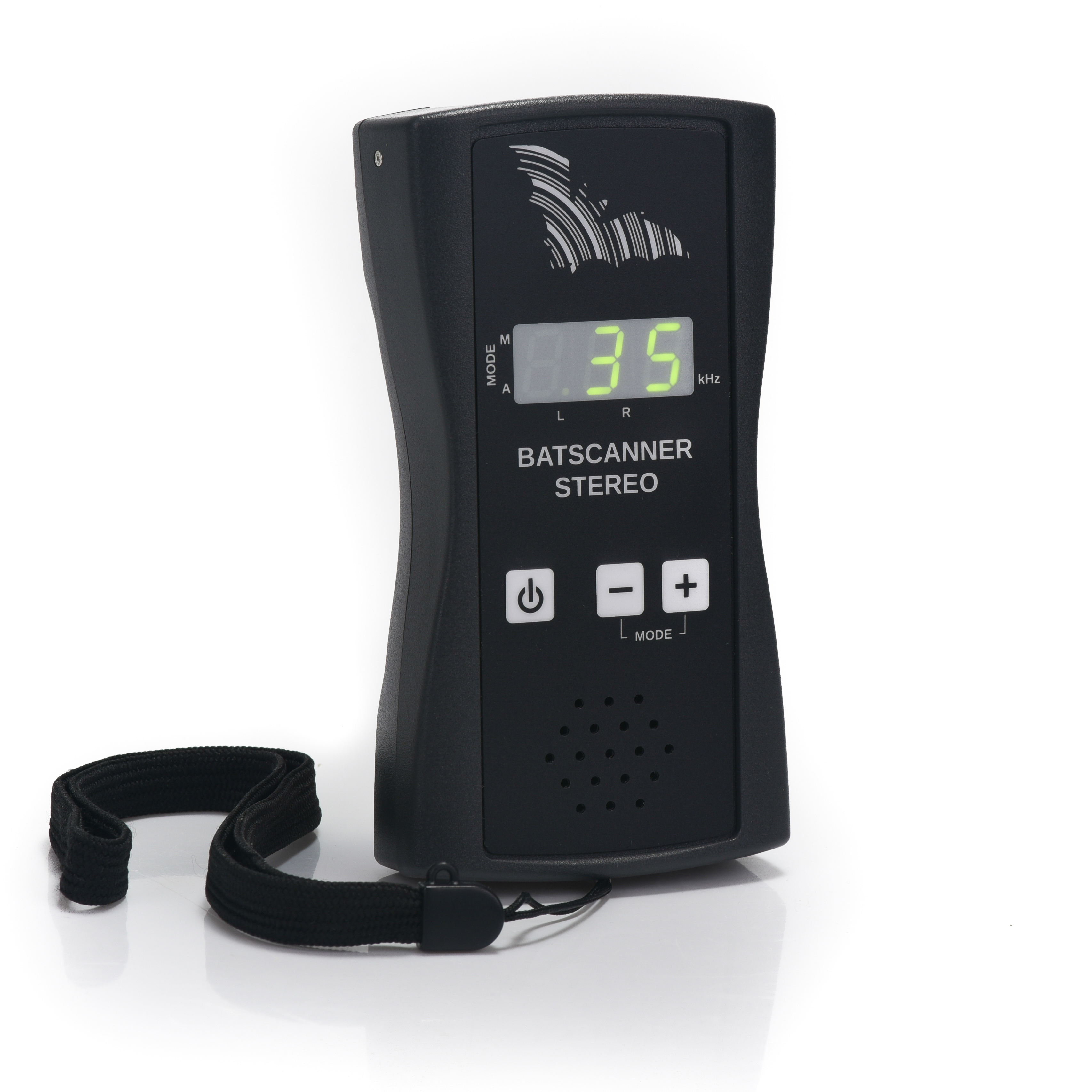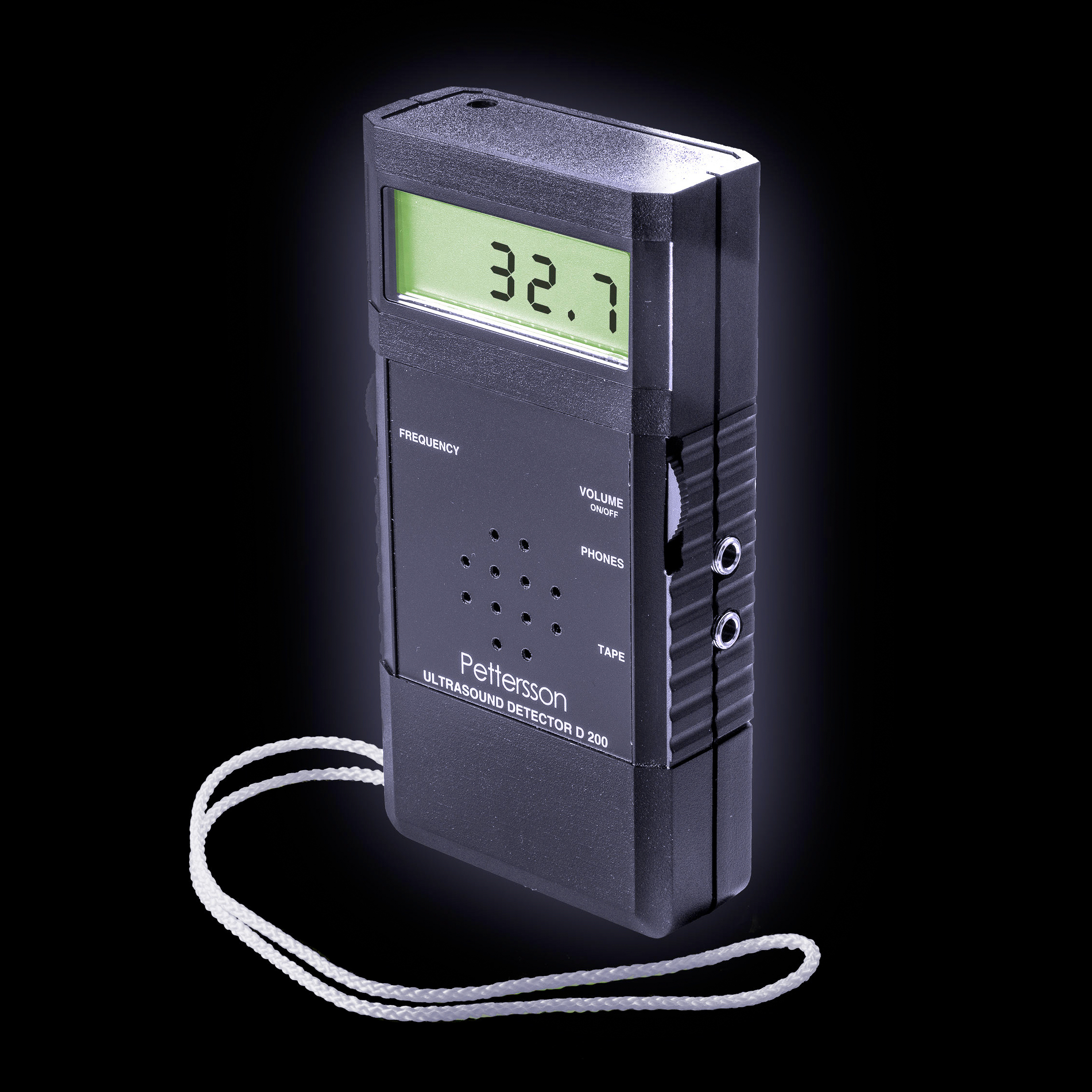A simple, inexpensive heterodyne bat detector will open your ears to the inaudible world of bats. Simply hold the microphone skyward and if necessary, tune to a frequency of interest, usually between 25-40 kHz.
The detector will transform high frequencies into sounds humans can hear. Sooner or later you will hear a bat approaching, which will sound like a relatively constant series of "clicks" to us.
The calls (or clicks as we hear them) may speed up so fast they sound like a "zipper" closing for just a moment. This is a "feeding buzz" generated when a bat makes an attempt to catch prey. The calls speed up to sound like a "zipper" because a bat must increase it's calls from ~10 calls per second to an amazing ~200 call per second in order to catch a moving target.
Watch Scout in the following as she introduces a simple bat detector, and uses it in total darkness to search for bats emerging from of Mammoth Cave, the longest cave in the world.

Pettersson D100
A great advantage of heterodyne detectors like the D100 is that they are more sensitive; the D100 has dual microphones. They pick up bats at further distances than FS, FD, or ZC tech. They work out of the box; no fussing with smart devices, computers, or menus.

BatSCANNER
This wicked smart HET tunes itself to the strongest bat frequency in your environment, and also suppresses low frequency noise for a clear sound. The unique stereo version creates a "surround sound" experiance when using headphones.

Pettersson D200
This heterodyne detector features a very accurate backlit digital display allowing you to tune into your target frequency with the most precision.


